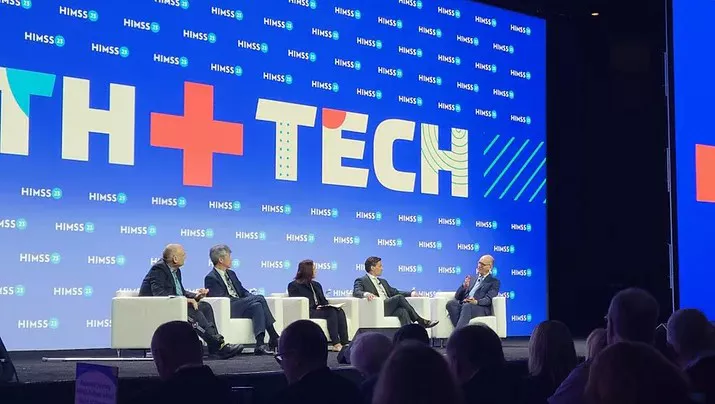UCLA Health
The future of patient experience

At a glance
We helped UCLA Health International Services integrate its customer relationship management system with its electronic health records to marry clinical processes with modern engagement practices.
Impact
Thanks to Salesforce Lightning Experience, automated workflows, and a custom quoting tool, care coordinators are delivering outstanding patient experiences—and the future looks even better.
Key Services
Industry
Healthcare provider
Key Technologies / Platforms
- Salesforce
Clinical excellence and better patient experiences
Imagine you need a life-saving procedure. Now imagine the place to go for treatment is a hospital on the other side of the world. On top of the stress of being sick, there’s paperwork to organize, appointments to schedule, and travel to coordinate—and you might not even speak the local language. It sounds overwhelming, but it’s exactly the journey UCLA Health International Services helps people navigate, every single day.
UCLA Health’s four hospitals and more than 160 clinics are consistently ranked among the best in the US. Its physicians are global experts in the diagnosis and treatment of complex illnesses, and patients from all over the world rely on them for leading-edge, research-based care.
For the international services team, patient care begins well before an appointment is scheduled. “My team is assigned from start to finish,” says Michael Burke, executive director of international services at UCLA Health. “Usually, patients have complex needs because they’re mostly coming to us for cancer treatments, transplants, neurosurgery, and that kind of thing.” Every patient is assigned a care coordinator who acts as a single point of contact throughout every phase of the patient’s experience. Alongside clinical excellence, it’s this level of patient support that sets UCLA Health apart.
Why both Salesforce and Epic?
The care coordinators’ role includes figuring out if a patient’s needs are a good fit for UCLA’s expertise and providing initial quotes for treatment, scheduling appointments, arranging for translators, and even physically escorting patients while they’re on site. Post-care activities might include account resolution, coordinating follow-ups, and administering surveys.
It’s a complex task management chain that requires broader support than electronic health records (EHRs) can usually offer. A CRM working alongside an EHR creates one centralized record of patient encounters, both clinical and nonclinical, and puts the patient’s experience and journey at the center of it all.
While CRMs are standard tools for other industries, healthcare providers have only just begun to harness their power. This is possibly because it might feel like a big conceptual leap to apply “customer” tools and strategies to a care scenario. As Burke points out, it’s important to realize that EHRs and CRMs complement each other. “Some health systems have understood it better than others,” he says, “but there’s still confusion. The ideal discussion should really be ‘What does our CRM infrastructure look like, and what’s the level of integration between the CRM and the EHR?’”
His team had been working with Salesforce Classic and were already in front of their competitors, but they wanted to push further ahead. They were keen to migrate to the Lightning Experience and start creating those all-important connections to their Epic EHR.
Driving operational efficiencies
Today, with Salesforce Lightning Experience and a one-way integration in place, the whole team can share information in a more streamlined manner. For example, when a patient approaches UCLA Health about a liver transplant, that creates a new episode of care (EOC) in Salesforce. Each EOC is broken into stages that move from first inquiry all the way through to account resolution. Slalom automated more than 25 workflows using dynamic page components. Now, the system guides care coordinators through lists of tasks or questions which change based the specific EOC stage. And dashboards offer a clear overview of their day, workload, and case statuses.
Another result: scheduling improvements. Prior to the integration, the team had to run daily reports and manually check the status of their patients’ appointments. They receive automatic alerts to cancelled or missed appointments and are able to reschedule more efficiently, in real time. No need for duplicate calendars, no manual reentry in multiple systems.
“Slalom saved us so much time for what seems like small tasks,” says Burke, “but each of those small tasks used to take an additional five minutes to do.” The care coordinators on UCLA Health’s international services team handle over 3,000 cases every year, so a more intuitive process means speedier and smoother patient care. The front desk can easily see all the patients the team currently has in-house, search by patient name, and locate the right care coordinator to help or, just as likely, find the answer right away.

Improving patient access
When a patient is ready to submit their paperwork, they can use a webpage built with Salesforce Sites that enables them to attach multiple documents at once. Every new patient inquiry now comes to the team through Salesforce as a qualified lead, making it easier to track conversion rates and understand why patients might decide not to choose UCLA for their treatment. Qualifying leads upfront also benefits patients: they’ll know much earlier in the inquiry process if UCLA Health isn’t the right fit for their needs.
Behind the scenes, a custom quoting solution has replaced hundreds of manual spreadsheet calculations. Slalom solution principal Joe Frank estimates the time it takes to produce quotes for patients has been reduced by nearly 80%. The tool combines the processes for quoting and invoicing. This means there’s one center of truth for financial representatives and care coordinators, and clarity and accuracy for patients.
All of this gives executive decision makers deeper insights that inform patient care and experiences.

The future of modern healthcare is here
What began as a simple migration has blossomed into a true digital transformation. Slalom and the international services team are working together on a host of new projects, including a two-way connection between Epic and Salesforce that will allow EHR information to be accessible in Salesforce, and enable approved care coordinators to see the outcome of an appointment and be proactive with patient support. The team will be able to send surveys to patients via text message immediately after an appointment and get real-time, actionable feedback. There’s also the potential for a Zoom integration and to support messaging through WeChat, Facebook, and Instagram.
An interactive portal—a single place online for patients to receive and share information with care coordinators—will go live later this year. Patients will be able complete their own profiles, upload medical records, receive treatment plans and telehealth care, and see appointment schedules. And, for the first time, they’ll be able to receive quotes and pay online.
The drive to deliver better experiences is now extending beyond the US. A joint venture to build a state-of-the-art hospital in Guangzhou, China is slated for completion in 2021. Slalom is building a community portal to enable the UCLA Health team to manage referrals and provide telemedicine services, second opinions, and education. Ultimately, the clinical team will have the capability to provide real-time support to their fellow doctors at the partner hospital and offer live guidance during procedures. The teams are also building a real-time dashboard for quality benchmarking will allow UCLA Health to track key metrics on outcomes, mortality, readmissions, CMS star ratings, and HCAHPS.
This is what the unleashed potential of an EHR and CRM integration looks like: each platform playing to its strengths, each supported by a good implementation and streamlined processes. “As we've been building a bigger use case for Salesforce, other parts of the organization have taken note, including our IT organization,” says Burke. “There’s been a lot more interest in investing additional resources.” His long-term vision is to see similar transformations across the whole healthcare sector, so that everyone, no matter they are, can have the best patient experience.



